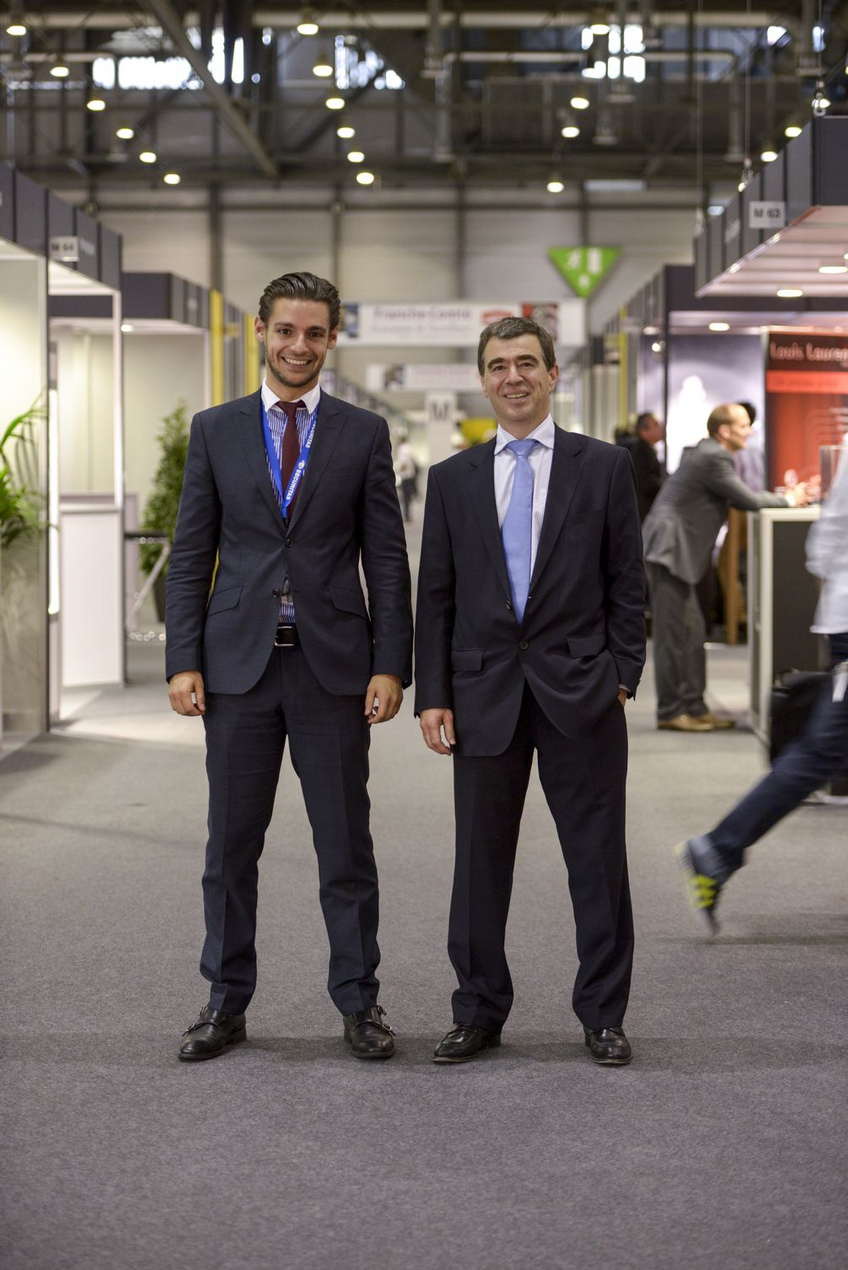

Horology: 850 exhibitors at the EPHJ-EPMT-SMT in June 2015
Switzerland’s greatest professional annual fair in Geneva is to watchmaking what the fabric fair is to fashion. This is a privileged setting where real business happens and where innovations and new methods are born.
As usual, the event will keep its promise. From 2nd to 5th June 2015, over 850 exhibitors will be in Palexpo-Geneva. That makes the EPHJ-EPMT-SMT the leading event in high precision, watchmaking-jewelry, micro technologies and medical technologies. The co-founders Olivier Saenger and André Colard succinctly described the event as a “platform for exchange, ideas, business and international novelties that reinforces the synergy between actors from three of Switzerland’s essential industrial fields”.
Needless to say, when we talk about the “most important professional and annual fair”, we mean that it is a professional fair and hence not open to the public. Here is where this event differs from others such as the Geneva International Motor Show or BaselWorld, which are both open to the public.

“In 2014, 832 exhibitors from 15 different countries attended the fair. This was 10% more than in 2013. All in all, 18,569 professional visitors from 58 countries attended”, Barthélémy Martin and Marcello Ronchietto, project manager and exhibitor coordinator respectively, recapitulated. Both work at Palexpo, the company that organizes trade fairs at the “Palais des Expositions et des Congrès de Genève”.
Still room for exhibitors?
By now, exhibitors will need to move fast if they still want to book a stall at the EPHJ-EPMT-SMT 2015 as the total reserved space to date is more than it was this time last year for the 2014 edition. Thus, it is expected that there will be more exhibitors participating in spite of the organizers’ decision to host the event in the same location. Indeed, since its creation – even during the 2009 financial crisis – the event has only known soaring statistics in terms of exhibitors and visitors. What could be the reason behind this success? “The numbers speak for themselves: business flows at the fair, both between exhibitors and with visitors. Whether we are in the middle of a crisis or close to one, we must organize these fairs”, Olivier Saenger and André Colard explained.
In fact, they think we should be asking this question to the exhibitors: “The fair is for them. If they come back for it, it’s because business is good. They get to meet all the relevant actors in their field in only a few days. Every professional visitor who is important to them is present”, they further explained. This success could also be inspired from the spirit of the fair – a blend of professionalism and common sense. For instance, it is against the rules to build your own stand, so everyone has the same stand. “This golden rule creates a feel of friendliness and modesty that characterize the industrial fields represented here”, Colard explained. “The fair’s concept is gradually growing stronger since our improving policy is based on sincerely listening to the requirements of exhibitors and visitors throughout the year”.
The international dimension: synergies
Every year there is an increase in both the number of international visitors– they came from 58 different countries in 2014 – and the percentage of non-Swiss exhibitors – usually around 20%. Whilst only European exhibitors are admitted for the watchmaking part (EPHJ), both micro technologies (EPMT) and MedTech (SMT) welcome exhibitors from all around the world.
Moving the event to Geneva has also certainly contributed to its internationalization due to the accessibility of the premises. Palexpo can be reached by train – the station is some 10 meters away – or by car as there is underground parking available. On top of this, the proximity of Geneva international airport as well as several hotels, including those in neighboring France, facilitates both travel and stay.
Another reason for the fair’s development and the fondness for it is that many watchmaking and micro technical companies wish to work in the medical field and vice versa. Their machinery is almost alike and operates in the same way. The MedTech Village is therefore interested in an affiliation with watchmaking in order to diversify its activities while actors in watchmaking and jewelry continue their quest for new technologies or specific methods that can be adopted from other fields. This is nothing new. For more than 200 years, whether it was in terms of materials or innovating methods, watchmaking has consistently benefitted from technological transfers and inventions originally from other fields such as medicine, aeronautics, spatial or automotive, amongst others.
However, watchmaking companies have recently been showing a growing interest in getting clients from the medical field. Even though watchmaking is faring well across the world, this is a legitimate ambition that would help get over unexpected problems that are inherent to international geopolitical or financial circumstances. The recent Euro depreciation will probably up the ante.




